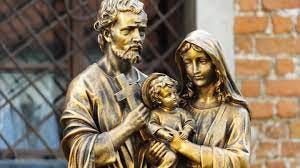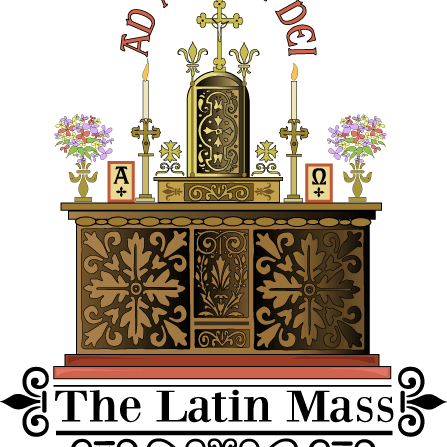Since the 16th-century Catholic piety has assigned entire months to special devotions. The month of February has been primarily associated with the holy Family, probably due to the feast of Our Lord's presentation at the temple, celebrated on February 2. At the very outset of Christ's work on earth, God showed the world a family in which, as Pope Leo XIII teaches, "all men might behold a perfect model of domestic life, and all virtue and holiness." The harmony, unity, and holiness which characterized this holy Family make it the model for all Christian families.
In that home in Nazareth, we meet a couple who shows an openness to allowing God to lead their life together. Mary surely had other plans for her life; as many believe, she took a vow of virginity at an early age, so becoming a physical mother was something she did not anticipate. Yet, she heard God’s invitation and knew that His plans were better for her life; therefore, she gives her fiat — that is, her “yes” to God.
St. Joseph opens his heart to the messenger sent by God and takes Mary into his home. This would not be the first or last time that St. Joseph followed God’s lead in his life as he protected the Holy Family. After Jesus’ birth in Bethlehem, they follow the prompting of an angel to flee into Egypt for safety and wait there until another angelic message leads them back home. The Holy Family is an excellent example for families everywhere to always be open to whatever God’s will might be and to always be listening for God to speak. He might speak his will in prayer or through another person. By our own prayer and discernment, we, too, can follow God’s lead for our life.
The home should be the principal place of catechesis. Unfortunately, many families today allow the Church to fill that role alone. The home of Nazareth, in addition to the local synagogue, would have been the place of instruction for the Christ Child. The Holy Family taught Jesus how to read, and at the start of his public ministry, Jesus would read from the scroll and declare the passage to be fulfilled in their hearing (see Lk 4:21). Mary and Joseph would have taught the Christ Child how to pray, especially the Shema, and years later Jesus would teach his disciples how to pray with the Our Father.
Joseph would have handed on his trade to his son, who later would die on the wood of a cross. Jesus had a great concern for the poor and the marginalized. In the home of Nazareth, he learned generosity and kindness. The home of Nazareth reminds us that families have the responsibility of teaching their children the Faith and modelling the virtues. Jesus had the most excellent parents; Mary was without sin, and Joseph is described as a just and prudent man. Parents today can learn from Joseph and Mary how to teach their children.
The Catholic tradition upholds the belief that Mary remained ever-virgin. St. Joseph often is referred to as Mary’s most chaste spouse and, in the Litany of St. Joseph, is recognized as the chaste guardian of the Virgin. Perhaps this is yet another way the Holy Family provides an example to our modern world, often assaulted by sexual promiscuity and fleeting lustful thoughts. The chaste relationship of Joseph and Mary reminds all Christian faithful that, even in marriage, chastity is to be observed.
The fidelity of Joseph and Mary to each other also gives a great example and encourages couples in their fidelity to one another, even in difficult circumstances. The chaste relationship between Joseph and Mary means they experienced intimacy in different ways throughout their common life together. Their purity of mind and heart of mutual love for each other and the Son of God is indeed worthy of imitation by all families.
Devotion to the Holy Family of Nazareth emerges in times when the family becomes weakened because of political and societal pressures. In the medieval period, Jean Gerson, a theologian at the Council of Constance (1414-18), encouraged devotion to the Holy Family, and Pope Leo XIII said that imitation of the Holy Family would be a means to revitalize and strengthen family life. In the third millennium, the institution of the family once again suffers attacks politically and socially.
Perhaps now is the time for us to knock on the door of the Holy Family’s home in Nazareth and move from being an onlooker peering into a guest in their home. From them, we will learn many virtues for Christian family life and, through their inspiration, practice them in our homes and among our own families.




